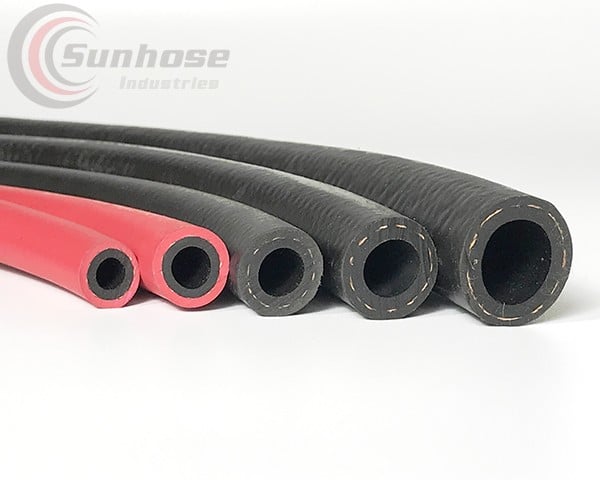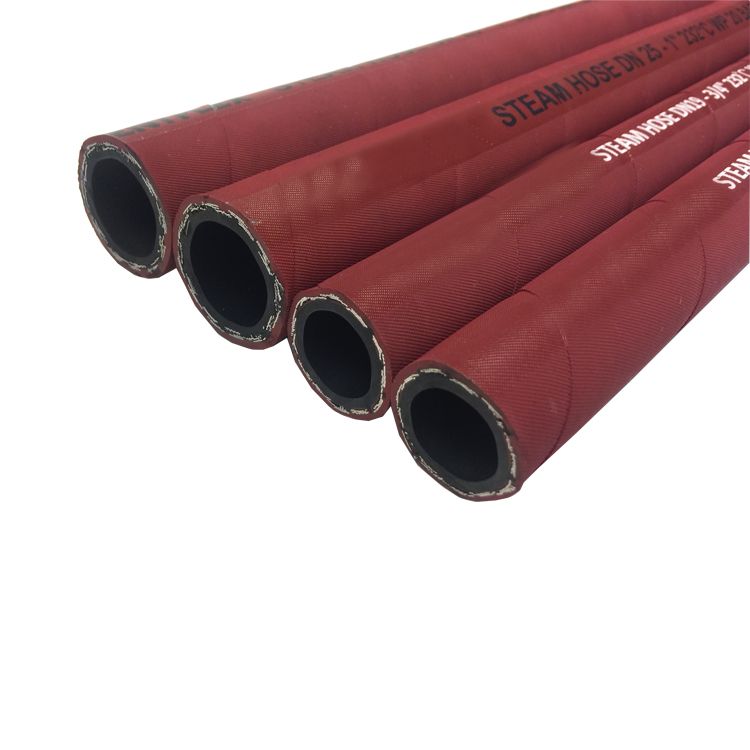Rubber Hoses
Rubber hoses are flexible tubes made of natural or synthetic rubber that are used to transfer fluids, gases, or materials from one point to another. They are widely used in various industries, including automotive, construction, marine, and agriculture. In this comprehensive guide, we’ll discuss the different types of rubber hoses, their applications, and how to choose the right one for your needs.

red rubber air water hose
Types of Rubber Hoses:
Rubber hoses come in various types, depending on their construction, application, and the materials they’re made of. Some of the most common types include:
Air hoses: These are designed for use with air compressors to transfer air from the compressor to tools, machines, or other devices.
Water hoses: These are used to transfer water from one location to another, such as from a water source to a sprinkler system.
Chemical hoses: These are used to transfer chemicals, acids, and other corrosive materials safely.
Petroleum hoses: These are designed for use with petroleum-based fluids, such as gasoline and diesel fuel.
Food and beverage hoses: These are designed for use in the food and beverage industry to transfer liquids, such as wine, beer, and milk.
Steam hoses: These are used to transfer steam from one location to another, such as from a steam boiler to a machine.

Steam Hose
Applications of Rubber Hoses:
Rubber hoses are used in various applications, depending on the industry and the type of hose. Some of the most common applications include:
Automotive: Rubber hoses are used in cars, trucks, and other vehicles for various purposes, such as cooling, heating, and fuel transfer.
Construction: Rubber hoses are used in construction equipment, such as excavators and bulldozers, for hydraulic systems and other applications.
Marine: Rubber hoses are used in boats and ships for various applications, such as fuel transfer, bilge pumping, and water intake.
Agriculture: Rubber hoses are used in agricultural equipment, such as tractors and irrigation systems, for water transfer and other applications.
Choosing the Right Rubber Hose:
Choosing the right rubber hose depends on several factors, including the application, the type of fluid or material being transferred, and the working environment. Here are some factors to consider when choosing a rubber hose:
Size: The size of the hose determines the flow rate and the amount of material that can be transferred.
Material: The material of the hose should be compatible with the fluid or material being transferred to prevent chemical reactions or damage to the hose.
Temperature range: The hose should be able to withstand the temperature range of the material being transferred and the working environment.
Pressure rating: The hose should be rated for the maximum pressure of the system to prevent failure or leakage.
Bend radius: The hose should have a minimum bend radius to prevent kinking or damage to the hose.
Conclusion:
Rubber hoses are essential components in various industries, and choosing the right hose is crucial for safe and efficient operation. By considering the factors mentioned above, you can select the right hose for your needs. Whether you’re in the automotive, construction, marine, or agricultural industry, there’s a rubber hose that’s suitable for your application.

 Sunhose
Sunhose